Jordanian thobes featured a stitch called al-roqma, which differs from the Palestinian cross-stitch. It’s shape resembled the numbers seven and eight in Arabic. Photo by Heather Surls.
ARABIC ARTICLE, ENGLISH TRANSLATION, & PHOTOS BY BATOOL AL-DULIGAN
Photos were taken at Tiraz Centre in Amman, Jordan. Special thanks to the centre’s staff for their help with the research for this article.
Jordan is an Arab country located on the east bank of the Jordan River, bordering Palestine’s West Bank. Divided into northern, central, and southern governorates, every region in Jordan contains a specific group of people that share characteristics, habits, and traditions, in addition to their traditional costumes that differ from region to region. However, unlike in Palestine, where we find huge diversity among thobes, in Jordan the differences from region to region are much less dramatic.
The embroidery style in Jordan, called al-roqma, differs from that of Palestine. The stitches resemble the numbers seven and eight in the Arabic language. In Arabic script, seven looks like a “v” in English, while eight looks like an upside-down “v.” Most thobes in Jordan were black, and the embroidery colors were the only difference between them. For instance, people in northern governorates traditionally preferred blue, red, yellow, and white embroidery together in the same dress. Additionally, some regions in Jordan, such as the southern governorates, used beads in their embroidery instead of thread.
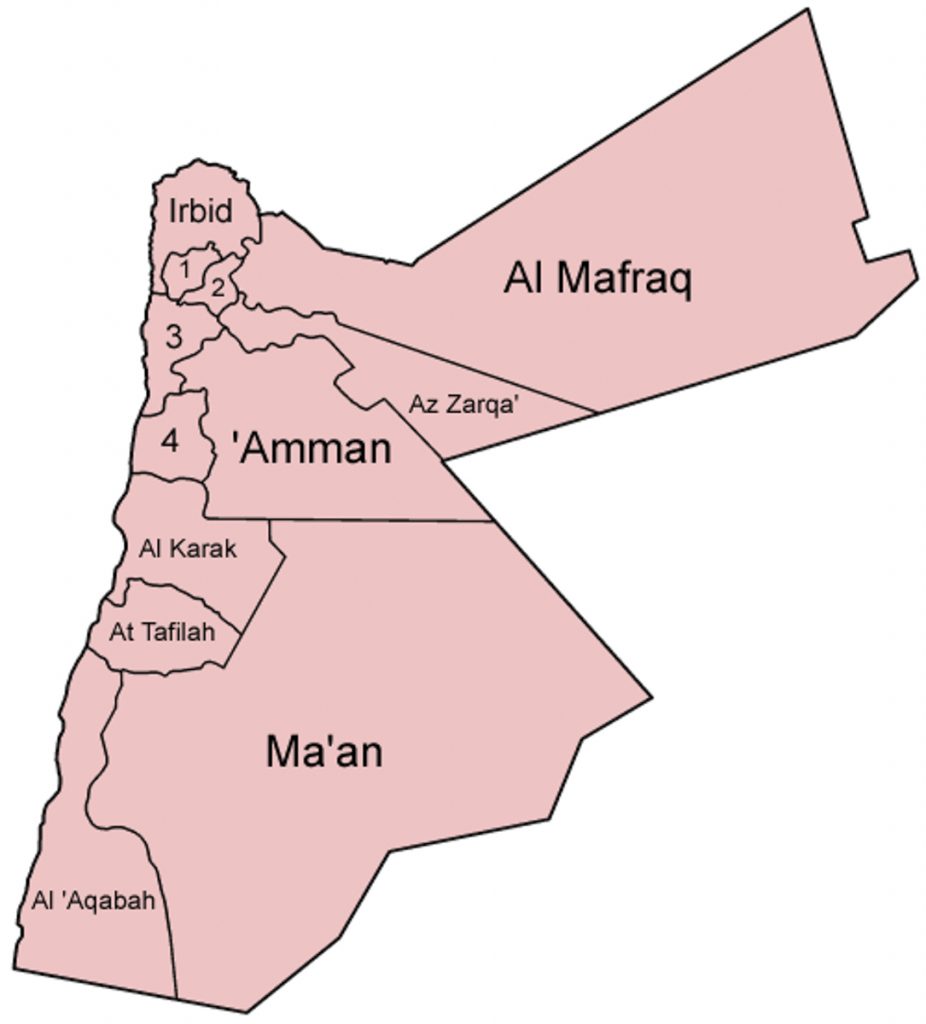
Original map of Jordan provided by Wiki Commons.
One unique dress in Jordan, al-khalaga, comes from Al-Salt, one of Jordan’s oldest cities, located northwest of Amman. At about 3 meters (around 3.3 yards), this was one of the longest traditional thobes in all the world. The reason behind this length is that women in the past were responsible for carrying their personal effects, so they would tuck the longest part of this dress into a belt to create a big pocket for carrying everything. The sleeves of this thobe were also very wide because women were responsible for carrying their babies. These sleeves were shaped in such a way that they could act as blankets for their babies. Al-khalaga was black with colorful embroidery.
The second unique dress in Jordan is from Ma’an, a city in the southern desert. This is the only truly colorful thobe in Jordan. This dress contains no embroidery but is instead distinctive for its shiny orange and yellow fabrics. The highway leading to the pilgrimage in Mecca used to run through Ma’an, connecting people from different countries. Because people in Ma’an were in touch with other cultures and citizens, they were always happy and sociable, traits symbolized by the bright colors in their thobes.
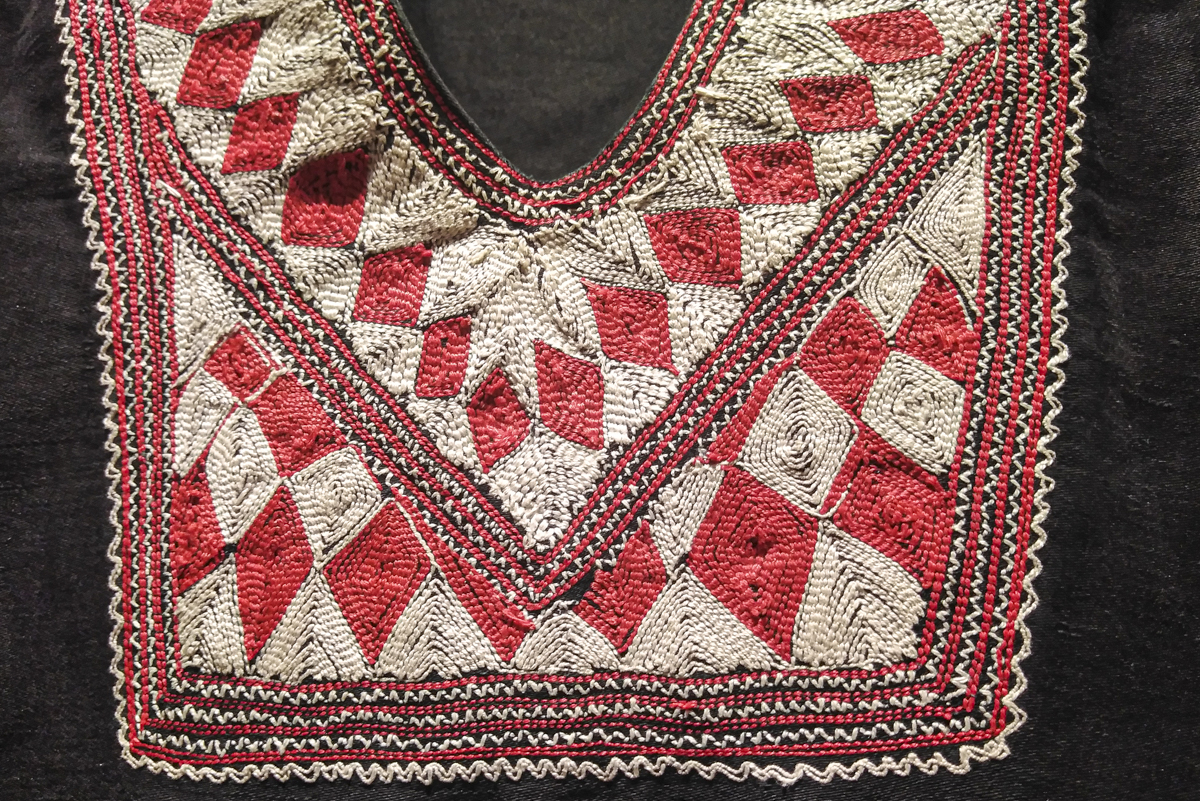
Close-up of the front panel embroidery on a Jordanian thobe from the Jerash area. Photo by Heather Surls.
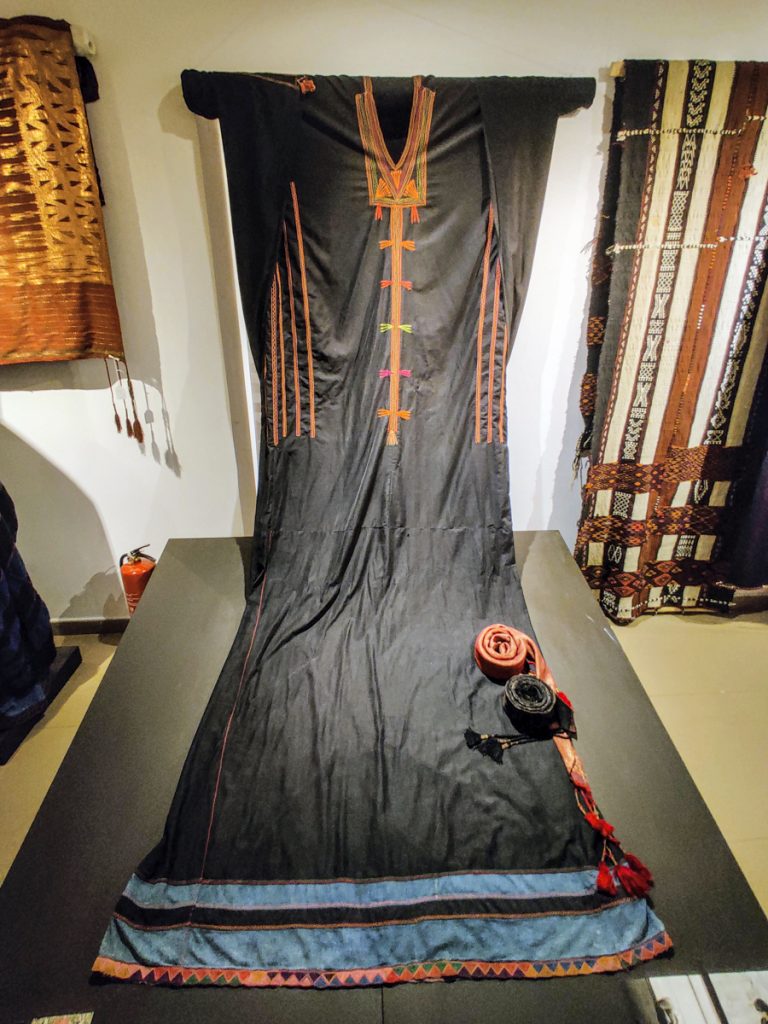
The famous three-meter long al-khalaga thobe from Al-Salt, northwest of Amman, Jordan.
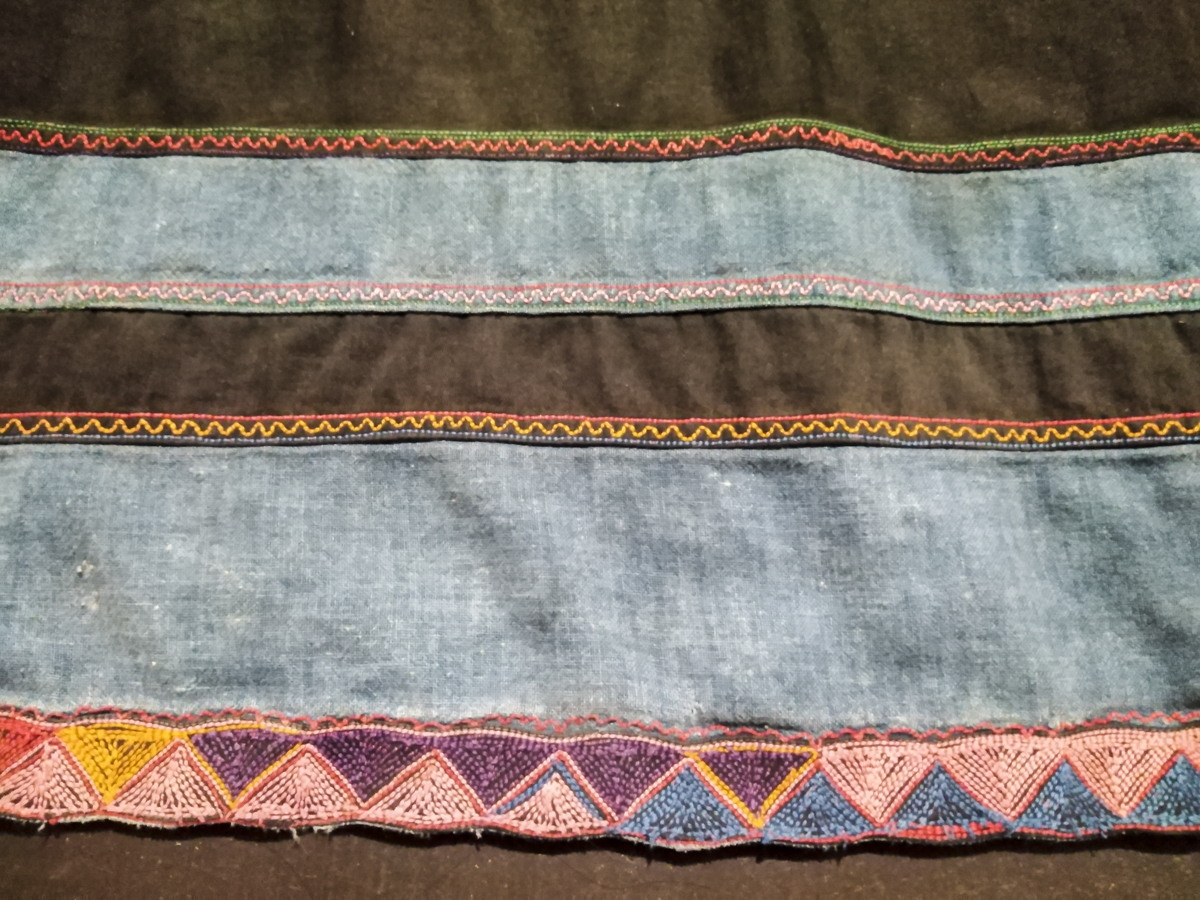
Detail of al-khalaga’s hemline. Photo by Heather Surls.
For more photographs and details on the thobes in Palestine and Jordan, view The Handwoven History of Palestine and Jordan, a Google Arts & Culture online exhibit featuring many of the thobes in the Tiraz Centre in Amman.
Be sure to read the first two articles of this three-part series for an introduction to the thobe culture of the Middle East and to learn about the distinctive thobes of Palestine.
تقع المملكة الاردنية الهاشمية في منطقة الشرق الأوسط وبلاد الشام الواقعة على طرف الحوض الشرقي من نهر الأردن. تنفرد الأردن بسبب التنوع السكاني المتواجد فيها إضافة إلى تنوع الحضارات والمدن في داخل هذه الدولة.
تنقسم الأردن إلى محافظات الشمال، ومحافظات الجنوب، ومحافظات الوسط. حيث إن كل منطقة في الاردن ومحافظاتها تحتوي على مجموعة من الأشخاص الذين يتشاركون في نفس الصفات، والعادات، والتقاليد إضافة إلى الزي الشعبي. إذ تختلف هذه الأزياء من منطقة إلى منطقة في الأردن مثل فلسطين، فعلى سبيل المثال، الثوب الاربدي يختلف عن الثوب الكركي من ناحية الطول واللون والتطريز والعصبة الموضوعة على الرأس، وعلى الرغم من ذلك إلا أن تنوع الأثواب في الأردن أقل بكثير من فلسطين، لذلك سيركز هذا المقال على أشهر الأثواب في الأردن وهم الخلقة السلطية والثوب المعاني.
يختلف التطريز الأردني عن التطريز الفلسطيني في نوع التطريز والقطبة حيث إن التطريز الأردني يتميز بالقطبة الشهيرة وهي الرقمة المتمثلة برقم ثمانية وسبعة باللغة العربية إذ تقع قطبة الثمانية في الأعلى والسبعة في الأسفل ليشكلوا إشارة المعين. إن جميع الأثواب بالاردن تشترك باللون الأسود وتختلف بلون التطريز وحجمه، فمثلا المواطنين القاطنين في الشمال يفضلون استخدام التطريز بألوانه المختلفة كاللون الازرق والاصفر والاحمر والابيض معا في نفس الثوب، على عكس بعض مواطنين جنوب المنطقة الذين يفضلون استخدام الخرز في التطريز بدلا من الخيوط.
أولا، الخلقة السلطية ذات اللون الاسود والتطريز الملون، تعتبر الخلقة السلطية واحدة من أطول الأثواب في العالم إذ يصل طول الثوب إلى الثلاثة أمتار؛ يرجع السبب في هذا الطول إلى أن المرأة قديما كانت مسؤولة عن حمل الحاجيات ونقل امورها الشخصية وأمور زوجها عند الترحال فكانت تعمل على وضع كل هذه الحاجيات في الجهة الطويلة من الثوب ومن ثم تثنيه وتثبته باستخدام الحزام حتى يصبح شكله طبيعيا كثوب طبيعي ولكنه بالحقيقة هو كالجيب. أما بالنسبة للأكمام، فإن أكمام هذا الثوب تتميز بعرضها الكبير حتى تستطيع المرأة حمل اطفالها بكل سهولة من خلال لفهم بهذه الأقمشة الكبيرة والواسعة.
ثانيا، الثوب المعاني، يعتبر هذا الثوب هو الثوب الاردني الوحيد الذي يتميز بألوانه المشرقة والذي لا يحتوي على أي نوع من أنواع التطريز. ينفرد هذا الثوب بلونه البرتقالي المشع والأصفر الجذاب ويعود السبب في اختيار مثل هذه الألوان هو وقوع معان على الخط التجاري وطريق الحج فكانوا دائما يلتقون بشعوب وأناس جدد وهذا ما يجعلهم دائما بطاقة رائعة وينعكس ذلك على لون ثوبهم.
Batool Al-Duligan is an Arab writer living in Amman, Jordan. She received her Bachelor of Arts degree in Applied English-Linguistics from the University of Jordan and her training in translating news articles at the Jordan News Agency in Amman. She is an opinion writer and columnist at Sasa Post and a marketer at Souq Fann, an e-commerce website and social enterprise that supports the local community and offers new opportunities for craftsmanship in Jordan.

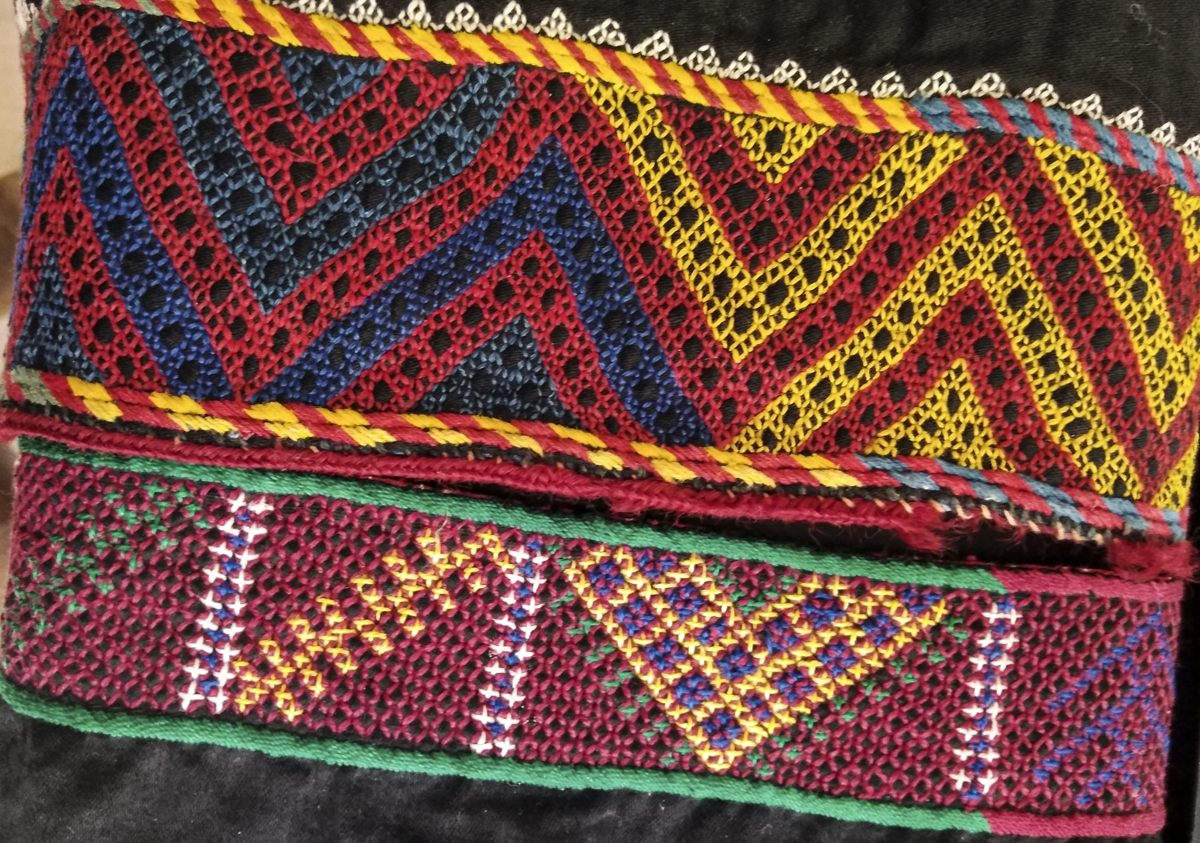
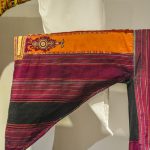
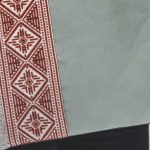
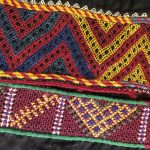
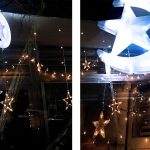
One thought on “Jordanian Costumes: The Embroidered History of Palestinian and Jordanian Thobes, Part 3”